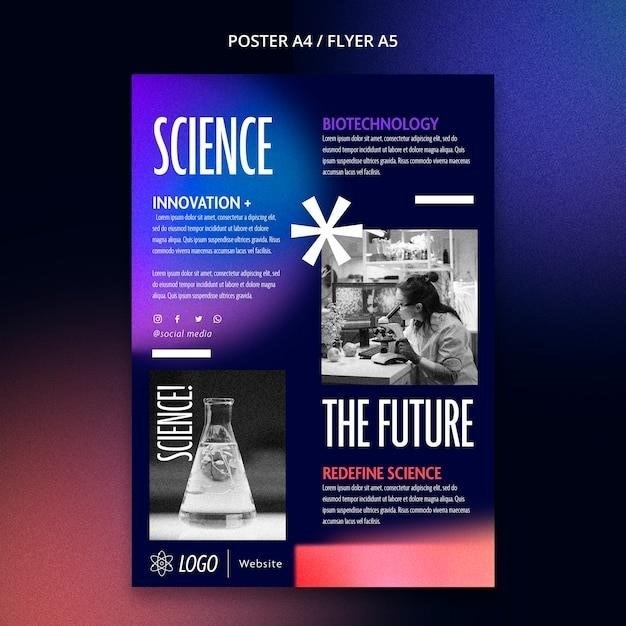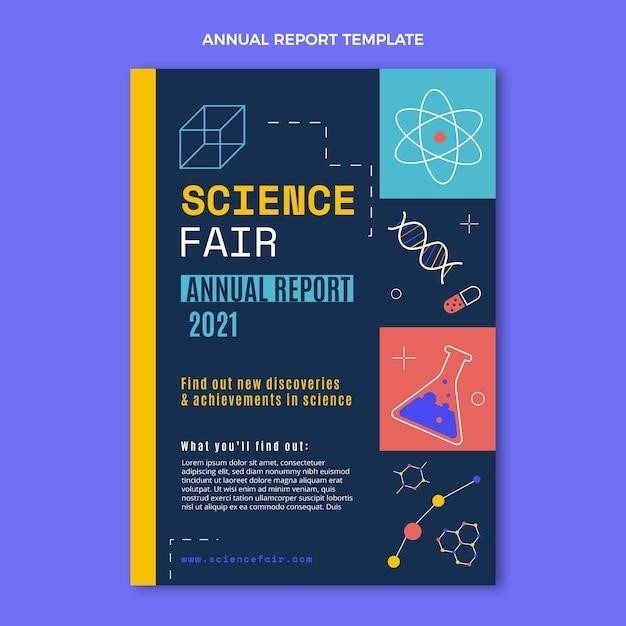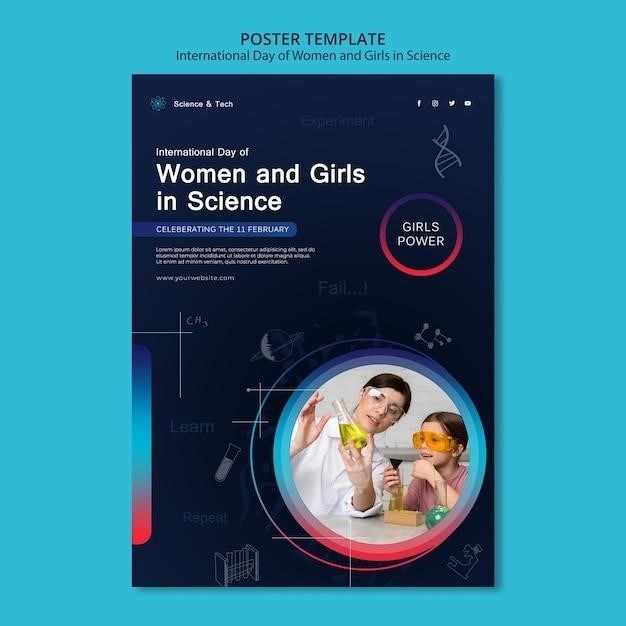Good Will Hunting, written by Matt Damon and Ben Affleck, is a powerful story about a genius janitor grappling with his past and identity. The screenplay, which won the Academy Award for Best Original Screenplay, explores themes of self-discovery, friendship, and class struggles. Its raw dialogue and complex characters have made it a timeless classic in modern cinema. Available as a PDF, the script offers insights into its emotional depth and authentic storytelling, inspiring writers and filmmakers worldwide.

Why Reading the Screenplay Matters
Reading the Good Will Hunting screenplay is essential for understanding its emotional depth and storytelling craft. The script, written by Matt Damon and Ben Affleck, offers insights into authentic dialogue, complex character development, and a compelling narrative structure. It serves as a masterclass for aspiring writers, showcasing how to balance raw emotion with intellectual depth. The screenplay’s exploration of themes like self-discovery and friendship provides a blueprint for creating relatable and impactful stories. Additionally, studying the script reveals how its non-linear structure and character-driven plot contributed to its critical acclaim. For filmmakers and writers, it remains a timeless resource for learning the art of storytelling.
Brief Summary of the Story
Good Will Hunting follows Will, a self-taught math prodigy working as an MIT janitor, who solves a complex equation left by a professor. Discovered by the professor, Sean Maguire, a therapist, helps Will confront his troubled past and emotional barriers. The story explores Will’s journey of self-discovery, his loyalty to his friend Chuckie, and his reluctant romance with Skylar. Through Sean’s guidance, Will learns to embrace his talents and face his inner demons, leading to a cathartic resolution. The film captures themes of identity, friendship, and redemption, making it a deeply resonant and memorable narrative.

Historical Background of the Screenplay
Written by Matt Damon and Ben Affleck, the Good Will Hunting screenplay earned an Oscar for Best Original Screenplay. Available as a PDF, it remains a timeless study of genius and redemption.
The Oscar Win for Best Original Screenplay
The Good Will Hunting screenplay made history by winning the Academy Award for Best Original Screenplay in 1997. This milestone marked the rise of Matt Damon and Ben Affleck as Hollywood’s brightest new talents. The win not only validated their raw storytelling ability but also brought attention to the film’s poignant exploration of identity, class, and redemption. The screenplay’s success was a testament to its authentic dialogue and deeply human characters, resonating with audiences and critics alike. Available as a PDF, the script continues to inspire aspiring writers, offering a masterclass in emotional depth and character-driven narratives. Its legacy endures as a modern classic in cinema history.
From Script to Screen: The Journey
The journey of Good Will Hunting from script to screen was a remarkable testament to perseverance. Written by Matt Damon and Ben Affleck, the screenplay faced initial skepticism but eventually gained traction with director Gus Van Sant. The film’s production was a collaborative effort, with Robin Williams delivering an iconic performance that earned him an Oscar for Best Supporting Actor. The script’s evolution involved refining its emotional core while maintaining its raw authenticity. Available as a PDF, the screenplay reveals the meticulous craftsmanship behind the film’s success. This journey from a grassroots script to a cinematic masterpiece continues to inspire filmmakers and writers, showcasing the power of compelling storytelling.

Key Themes in Good Will Hunting
Good Will Hunting explores themes of self-discovery, friendship, and class conflicts, delving into the complexities of identity and emotional healing. The screenplay’s depth resonates deeply with audiences.
Self-Discovery and Personal Growth
In Good Will Hunting, self-discovery and personal growth are central themes. Will Hunting, a math prodigy, struggles with his identity and past traumas, hindering his ability to embrace his intellect. Through his relationship with Sean Maguire, a psychologist, Will confronts his inner demons and learns to accept himself. This journey of self-realization is poignant, as Will moves from self-doubt to empowerment, ultimately finding the courage to pursue his true potential and emotional healing. The screenplay masterfully portrays this transformation, emphasizing the importance of facing one’s past to achieve personal growth and fulfillment.
Friendship and Loyalty
Friendship and loyalty play pivotal roles in Good Will Hunting. Will’s bond with Chuckie, his childhood friend, exemplifies unwavering loyalty despite their differing paths. Chuckie’s steadfast support and belief in Will’s potential serve as a constant source of encouragement. Additionally, Will’s relationship with Skylar challenges his ability to trust and open up, highlighting the transformative power of genuine connections. The screenplay portrays these relationships with authenticity, showing how they aid Will’s journey of self-discovery and emotional healing. Through these dynamics, the importance of loyal friendships in overcoming personal struggles is deeply underscored, making it a cornerstone of the story’s emotional depth.

Class Conflicts and Identity
Good Will Hunting delves into themes of class conflicts and identity, as Will navigates his genius intellect amidst a working-class background. His struggle to reconcile his academic prowess with his South Boston roots creates tension, reflecting broader societal divisions. The screenplay portrays Will’s internal conflict through his interactions with Harvard students and professors, emphasizing his feelings of alienation. These class dynamics highlight the challenges of bridging intellectual and cultural divides. By exploring these tensions, the story underscores the complexity of self-discovery and the impact of societal expectations on personal identity, providing a nuanced commentary on class and belonging.

Analysis of Main Characters
Good Will Hunting features complex characters, with Will Hunting as the central figure, a genius grappling with emotional scars. Sean Maguire, a wise psychologist, guides Will toward healing, while Skylar represents hope for a better future. Chuckie, Will’s loyal friend, embodies unwavering support and humor, highlighting the depth of their bond. These characters drive the story’s emotional core, exploring themes of identity, redemption, and human connection.
Will Hunting: The Genius with a Tortured Past
Will Hunting, portrayed by Matt Damon, is a brilliant mathematician working as a janitor at MIT, hiding his intellect behind a tough exterior. His genius-level IQ is contrasted with a deeply troubled past, marked by abandonment and abuse, which fuels his self-destructive tendencies and inability to trust others. Despite his rough demeanor, Will’s vulnerability and longing for connection shine through, making him one of cinema’s most complex and relatable characters.
His journey of self-discovery, aided by Sean Maguire and Skylar, reveals his inner turmoil and struggle to embrace his potential. Will’s character arc explores themes of identity, redemption, and the power of human relationships to heal emotional wounds.
Sean Maguire: The Mentor and Catalyst
Sean Maguire, played by Robin Williams, is a psychologist who becomes the pivotal figure in Will’s life. Sean’s unorthodox methods and genuine empathy help Will confront his emotional barriers and embrace his true potential. Their therapy sessions are raw and heartfelt, with Sean challenging Will to take responsibility for his life and relationships. Sean’s wisdom and warmth provide the catalyst for Will’s journey of self-discovery, making him a cornerstone of the story.
Sean’s own experiences with loss and personal growth add depth to his character, allowing him to connect with Will on a profound level. His influence is instrumental in Will’s transformation from a self-destructive genius to someone capable of love and acceptance.
Skylar: The Love Interest and Motivator
Skylar, portrayed by Minnie Driver, is a Harvard student who enters Will’s life, challenging his emotional walls and inspiring personal growth. Her intelligence, confidence, and genuine care for Will create a dynamic that pushes him to confront his insecurities. Skylar’s presence motivates Will to embrace his intellectual gifts and consider a future beyond his troubled past. Despite their differences—she from privilege, he from a working-class background—Skylar’s unwavering support helps Will navigate his internal conflicts. Her character represents the possibility of love and acceptance, urging Will to reconcile with himself and his abilities, making her a pivotal force in his journey toward self-acceptance.
Chuckie: The Loyal Friend
Chuckie, played by Ben Affleck, is Will’s childhood friend and confidant, embodying unwavering loyalty and unconditional support. Despite his rough exterior, Chuckie provides a grounded perspective, often serving as Will’s moral compass. His friendship helps Will navigate his emotional turmoil, offering a sense of belonging and stability. Chuckie’s character highlights the importance of genuine connections in overcoming personal struggles, making him an essential figure in Will’s journey toward self-acceptance and growth.

Where to Find the Good Will Hunting Screenplay PDF
The Good Will Hunting screenplay PDF is available on various websites like moviescriptsandscreenplays.com, IMSDb, and Script Fly. These platforms offer free downloads for educational purposes, allowing aspiring writers to study the award-winning script by Matt Damon and Ben Affleck. Ensure you access these resources legally and ethically to support the creators and the film industry.
Popular Websites for Downloading
The Good Will Hunting screenplay PDF can be downloaded from various reputable websites. moviescriptsandscreenplays.com and IMSDb offer free access to the script, ideal for educational purposes. Additionally, Script Fly provides multiple versions, including the original and final drafts. The Script Source and Scripts.com also host the screenplay, allowing readers to study the award-winning dialogue and character development. Some versions may be incomplete, such as the one missing pages 13-14 on Script Fly. These platforms are valuable resources for aspiring screenwriters and film enthusiasts seeking to analyze the work of Matt Damon and Ben Affleck.
Legal and Ethical Considerations
Accessing the Good Will Hunting screenplay PDF requires attention to legal and ethical guidelines. While the script is widely available for educational purposes, downloading it from unauthorized sites may infringe on copyright laws. Always use reputable sources like moviescriptsandscreenplays.com or The Script Source, which offer legal access. Respect intellectual property by using the script for personal study or educational use only. Avoid sharing or distributing copyrighted material without permission. Supporting creators by accessing content legally ensures the continued availability of such resources for future learners and filmmakers.

Scene Studies and Iconic Moments
The screenplay features iconic scenes like the “It’s Not Your Fault” monologue, Will’s emotional breakdown, and the final confrontation, showcasing raw emotion and character depth.
The “It’s Not Your Fault” Scene
The “It’s Not Your Fault” scene is one of the most emotional and pivotal moments in the screenplay. Sean Maguire, played by Robin Williams, confronts Will about his self-blame and childhood trauma. The dialogue, delivered with raw intensity, forces Will to confront his inner pain. This scene showcases Robin Williams’ masterful performance, which earned him an Oscar for Best Supporting Actor. The exchange is deeply human, capturing the essence of vulnerability and redemption. Its emotional depth resonates with audiences, making it a defining moment in the film. The scene’s power lies in its authenticity, illustrating how empathy and understanding can spark transformation. It remains a hallmark of the screenplay’s ability to balance drama with heartfelt connection.
Will’s Breakdown in the Park
Will’s breakdown in the park is a heartbreaking scene where his emotional walls crumble. Overwhelmed by Sean’s words, Will confronts the trauma of his abusive childhood. The screenplay captures his vulnerability as he reveals his pain, showing a man struggling to accept his worth. This moment humanizes Will, making his journey towards healing relatable. The scene’s raw emotion, combined with Matt Damon’s performance, underscores the screenplay’s ability to portray complex inner turmoil. It’s a turning point, revealing Will’s deep need for acceptance and love, and it solidifies the film’s themes of redemption and self-discovery. This breakdown is crucial, as it sets the stage for Will’s eventual embrace of his true potential and emotional freedom.
The Final Confrontation
The final confrontation in Good Will Hunting marks a pivotal moment in Will’s journey, as he faces his inner demons and the realities of his relationships. This climactic scene, filled with raw emotion, showcases Will’s struggle to accept his true identity and the love offered by those around him. The screenplay masterfully captures the tension and vulnerability, highlighting the authenticity of Will’s emotional breakdown. This confrontation serves as a turning point, leading Will toward self-acceptance and the courage to embrace his future. The scene’s powerful dialogue and emotional depth resonate deeply, making it a memorable moment in the film. It underscores the themes of redemption and personal growth, leaving a lasting impact on the audience.

Writing Lessons from the Screenplay
The screenplay offers profound lessons in crafting raw, authentic dialogue and developing complex, relatable characters. Its non-linear structure and emotional depth provide invaluable insights for aspiring writers.
Dialogue: Raw and Authentic
The dialogue in Good Will Hunting is renowned for its raw, unfiltered authenticity, capturing the essence of real conversations. Matt Damon and Ben Affleck crafted lines that feel deeply personal and relatable, avoiding clichés. The screenplay’s exchanges, such as the iconic “It’s not your fault” scene, resonate with emotional honesty. The characters’ interactions are layered, revealing their inner struggles and vulnerabilities. This authenticity makes the dialogue feel genuine, drawing audiences into the story. The script’s ability to balance humor, anger, and tenderness is a masterclass in writing realistic conversations. It’s a key reason the screenplay has been widely studied for its emotional depth and connection to human experience.
Character Development: Depth and Complexity
The screenplay excels in crafting deeply complex characters, each with rich inner lives and distinct arcs. Will Hunting, the protagonist, is a brilliant yet troubled janitor, whose intellect and pain create a compelling duality. Sean Maguire, the psychologist, brings wisdom and empathy, serving as a catalyst for Will’s growth. Skylar’s charm and ambition contrast with Will’s insecurities, while Chuckie’s loyalty provides a grounding influence. The characters are multidimensional, avoiding stereotypes, and their interactions reveal layers of their personalities. This depth ensures that each character feels real and relatable, making their journeys resonate with audiences. The screenplay’s ability to develop such nuanced characters is a testament to Damon and Affleck’s skillful storytelling.
Plot Structure: Non-Linear and Emotional
The screenplay employs a non-linear narrative, blending past and present to create emotional depth. Flashbacks and fragmented scenes reveal Will’s traumatic childhood, while present-day interactions showcase his struggle to connect. This structure mirrors Will’s internal chaos, as his memories surface unpredictably. The film’s emotional core is amplified by its non-chronological storytelling, allowing audiences to piece together Will’s journey alongside his psychologist, Sean. The interplay between past and present underscores themes of healing and self-discovery, making the plot as emotionally resonant as it is structurally innovative. This approach keeps viewers engaged, ensuring the story feels both personal and universal, and highlights the screenplay’s mastery of emotional storytelling.

The Impact of Good Will Hunting
Good Will Hunting left a lasting mark on cinema, earning critical acclaim and launching Matt Damon and Ben Affleck’s careers. Its emotional depth and authentic storytelling continue to inspire writers and filmmakers, solidifying its place as a modern classic. The film’s success also highlighted the power of independent cinema, proving that compelling stories can resonate widely. Its influence remains evident in contemporary screenwriting, making it a timeless study for aspiring storytellers.
Launching Careers: Matt Damon and Ben Affleck
Good Will Hunting marked a pivotal moment in the careers of Matt Damon and Ben Affleck, catapulting them to stardom. The screenplay, which they co-wrote, earned them the Academy Award for Best Original Screenplay in 1997. Damon’s portrayal of the brilliant yet troubled Will Hunting solidified his status as a leading actor, while Affleck’s role as Chuckie Sullivan showcased his talent. The film’s success not only highlighted their acting prowess but also established them as formidable screenwriters. Their collaboration on Good Will Hunting set the stage for their future projects, proving their versatility in both writing and acting. The film remains a testament to their early brilliance and enduring impact on Hollywood.
Cultural Significance and Legacy
Good Will Hunting has left an indelible mark on popular culture, resonating with audiences long after its release. Its exploration of themes such as self-discovery and class struggles continues to connect with viewers, making it a relatable and enduring story. The film’s success paved the way for more authentic, character-driven narratives in Hollywood. Robin Williams’ iconic performance as Sean Maguire further cemented the film’s legacy, earning him an Academy Award. The screenplay’s raw dialogue and emotional depth have inspired countless writers and filmmakers. Today, Good Will Hunting is celebrated as a modern classic, offering timeless lessons about identity, healing, and the power of human connection. Its influence remains as strong as ever, ensuring its place in cinematic history.
Influence on Future Screenwriters
The Good Will Hunting screenplay has profoundly influenced aspiring screenwriters by showcasing the power of authentic storytelling. Its raw, emotional dialogue and deeply human characters serve as a masterclass in crafting relatable narratives. The film’s success, particularly its Oscar win, demonstrated that original, personal stories can resonate widely. Many emerging writers study the script for its non-linear structure, character development, and thematic depth. Its exploration of complex emotions and relationships provides invaluable lessons in creating compelling drama. As a result, Good Will Hunting remains a foundational study for screenwriters, inspiring them to pursue bold, heartfelt storytelling. Its legacy continues to shape modern cinema, offering timeless insights into the craft of screenwriting.
The Good Will Hunting screenplay, an Oscar-winning masterpiece, launched Matt Damon and Ben Affleck’s careers, leaving a lasting impact on writers and cinema. Its PDF remains a vital resource.
Final Thoughts on the Screenplay
Good Will Hunting stands as a testament to the power of storytelling, offering a deeply human exploration of genius and vulnerability. The screenplay, available as a PDF, showcases Matt Damon and Ben Affleck’s masterful dialogue and character development. Its themes of self-discovery, friendship, and redemption resonate universally, making it a timeless classic. The script’s emotional depth and authenticity have inspired countless writers, while its cultural impact continues to grow. As a learning tool, it remains invaluable for aspiring screenwriters seeking to craft compelling stories. The Good Will Hunting screenplay is not just a film script but a profound study of the human condition.
Why It Remains Relevant Today
Good Will Hunting continues to resonate with modern audiences due to its universal themes of self-discovery and emotional healing. The screenplay’s exploration of class struggles and identity remains poignant, reflecting societal challenges that persist today. Its authentic dialogue and complex characters provide timeless lessons in storytelling. The PDF version of the script is widely studied by writers and filmmakers, highlighting its enduring influence. Additionally, the film’s impact on launching the careers of Matt Damon and Ben Affleck ensures its legacy as a cultural touchstone. The story’s ability to connect with audiences emotionally and intellectually ensures its relevance in contemporary discussions of mental health and personal growth.































